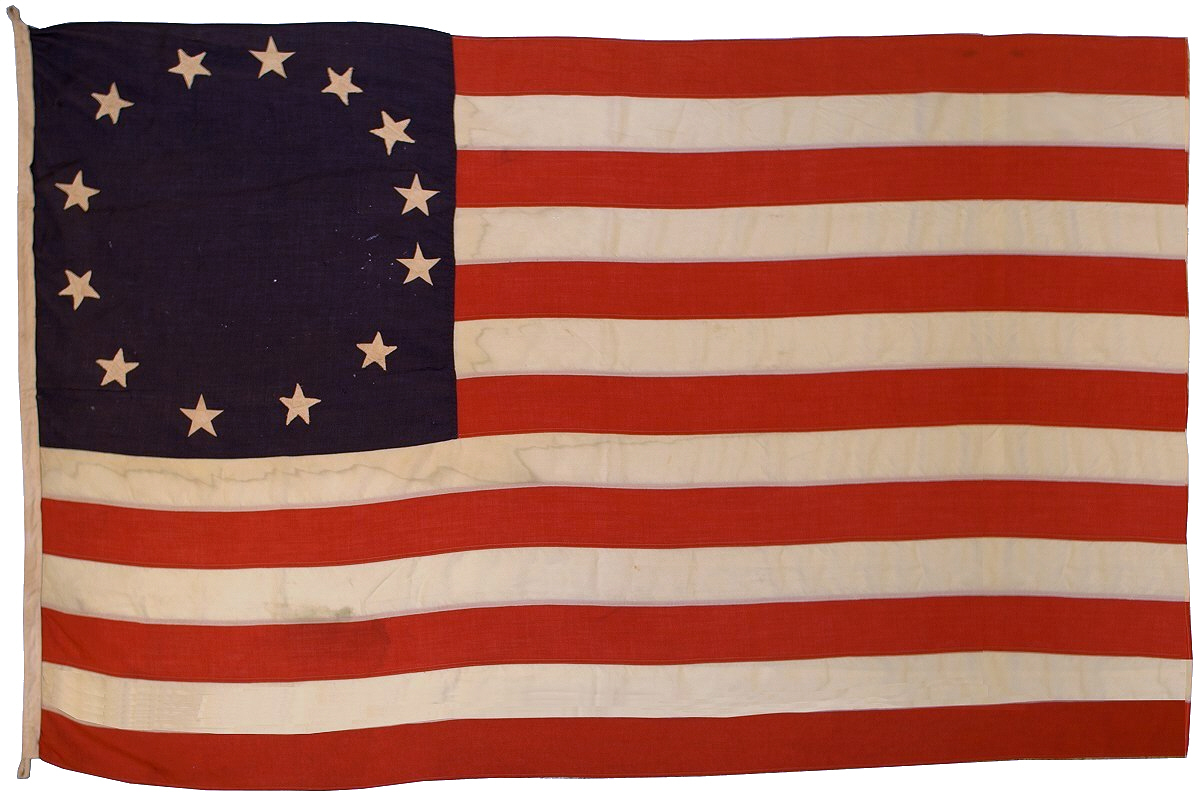
Antique American flags
in the Betsy Ross Pattern, consisting of a single wreath
of 13 stars, are much more scarce than most people
realize. The legend of Betsy Ross sewing the first
American flag gained widespread notoriety around the
time of the American Centennial, when Betsy Ross' great
grandson perpetuated the myth. However no
documentation exists that ties this particular pattern
of stars to a flag manufactured by Betsy Ross herself.
Betsy Ross' granddaughter, Rachel Albright, and her
great-granddaughter, Sarah Wilson, further perpetuated
the style as that originating with Betsy Ross when, in
the late 19th and early 20th century, they took up shop
in Independence Hall in Philadelphia and made small
hand-sewn silk flags in this pattern, signed by them, as
souvenirs. Widespread manufacture of American
flags in this pattern, though, did not take place until
the time of the American Bicentennial celebration in
1976. It's likely that less than one percent of
surviving antique 19th century and early 20th century
antique American flags with 13 stars are in this
pattern. Most are in the 3-2-3-2-3 pattern,
followed by the 13-star medallion pattern.
This particular flag is
interesting on several counts. Its stars are
double-appliqué, with ten of the stars (each side) being
crudely hand-sewn, and three of the stars being machine
sewn with a fine zig-zag stitch. The flag is
somewhat large for the period, and the canton shows
evidence of small holes in the wool. Overall, this
clearly indicates that the flag was originally a
full-count manufactured flag, perhaps in a star count of
45, 46, or 48, where the owner of the flag carefully
removed the stars, leaving just three behind, and
re-arranged the flag into the Betsy Ross pattern.
The wreath itself is bold and beautiful, and slightly
off-balance with the stars more densely arranged in the
top-right quadrant than in the others. The stripes
have mellowed to an off-white cream color. The
original rope hoist of the flag remains intact.
Because the zig-zag stitching on the remaining original
stars is very high quality, compared to earlier circa
1890 zig-zag stitching, I suspect the flag was most
likely a 48 star flag, which was converted to this
pattern circa 1926, during the American
Sesquicentennial, our celebration of the 150th
anniversary of our independence. Americans tend to
make and fly historic American flags most frequently
during these times, as evidence also by the surviving
flags made during the Centennial in 1876 and, most
recently, the Bicentennial in 1976. |

